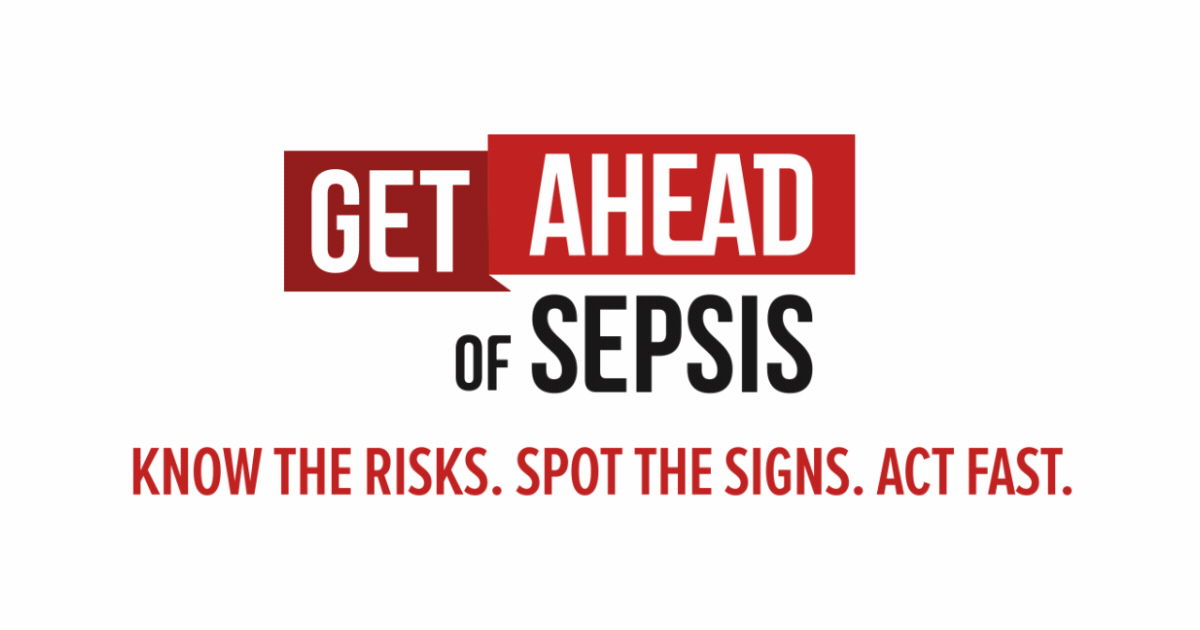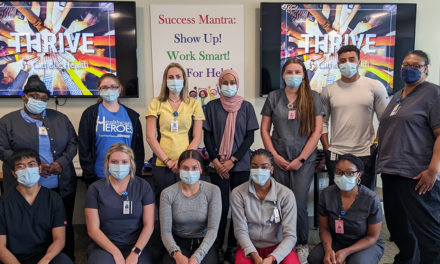Catholic Health Launches “Get Ahead of Sepsis” Campaign

Sepsis is one of the leading causes of death in the U.S., with more than 250,000 people dying from the condition each year. Many sepsis deaths can be prevented with rapid diagnosis and early treatment.
Despite these startling facts, sepsis is still widely misunderstood among many people. To help raise awareness and improve outcomes in Western New York, Catholic Health is launching a “Get Ahead of Sepsis” campaign, as part of a national effort sponsored by the Centers for Disease Control and Prevention (CDC). The campaign is designed to help the public know the risks, recognize the signs and symptoms, and seek immediate medical attention if sepsis is suspected. Visit chsbuffalo.org/sepsis for more information.
“People often think of sepsis as something you get in the hospital, but more than 90% of sepsis cases originate in the community,” said Dr. Kevin Shiley, Catholic Health Medical Advisor for Infection Prevention & Control. “That’s why it’s so important to know how to recognize and prevent this medical emergency.”
Sepsis is the body’s extreme response to an infection. Without timely treatment, it can lead to tissue damage, organ failure, and even death. “Anyone can get an infection and almost any infection can lead to sepsis, however there are steps you can take to minimize your risk,” explains Dr. Shiley. “Properly managing chronic medical conditions, practicing good hygiene, and acting fast to get emergency treatment if you think you have sepsis or have an infection that’s not improving or getting worse, is your best defense.”
The symptoms of sepsis can include any one or a combination of the following:
- Confusion or disorientation
- Shortness of breath
- High heart rate
- Fever, shivering or feeling very cold
- Extreme pain or discomfort
- Clammy or sweaty skin
Sepsis care has been a major focus at Catholic Health for the past four years, with the health system exceeding both state and national performance measures for sepsis management. “While we are making great strides, everyone can play a role in sepsis prevention and recognition,” Dr. Shiley adds. “The good news is, with proper recognition and action, sepsis is treatable.”
As part of the “Get Ahead of Sepsis” campaign, the CDC has educational materials and resources for patients, families, and healthcare professionals at www.cdc.gov/sepsis.
Sepsis Facts
- Sepsis is one of the leading causes of death in U.S. hospitals, with as many as 92% of sepsis cases originating in the community (source: Sepsis Alliance).
- According to the CDC, more than 1.5 million people get sepsis each year in the U.S. and about 250,000 die from the diseases.
- The overwhelming majority of sepsis cases are NOT acquired in the hospital.
- Sepsis is widely misunderstood and affects patients throughout WNY.
- Sepsis is one of the most common reasons for people being admitted to the hospital outside of elective surgery and childbirth.
- Sepsis can result from any type of infection — bacterial, viral or fungal — anywhere in the body, including pneumonia, influenza, abdominal, kidney, bloodstream, and urinary tract infections.
- Often, the body’s immune system works to fight off infections. With sepsis, the immune system stops working, which can impair the delivery of oxygen and nutrients to vital organs and can lead to tissue damage, organ failure, and, in some cases, death.
- Some people are at higher risk of developing sepsis, including the very young or old, and those with chronic illnesses, weakened immune systems, wounds, injuries or invasive devices, such as catheters or breathing tubes.
- Sepsis is diagnosed based on a specific set of signs and symptoms, which can progress to severe sepsis and septic shock, which carries the highest risk of death.
- Diagnosing sepsis can be difficult because its signs and symptoms can be caused by other disorders and there is no definitive test for sepsis.
- Any infection, regardless of the cause, can lead to sepsis. However the risk of developing sepsis from a particular infection does vary depending on the patient’s pre-existing medical conditions, age, site of infection and the type of infecting organism.
- If sepsis goes untreated for too long any person can sustain permanent organ damage or even fatal outcomes. Even with aggressive antibiotic and resuscitative measures, severe sepsis carries a high mortality rate compared to many other common diseases.
- The incidence of sepsis appears to be increasing in the U.S. The causes of this increase may include: aging population, drug-resistant bacteria, and weakened immune systems.




